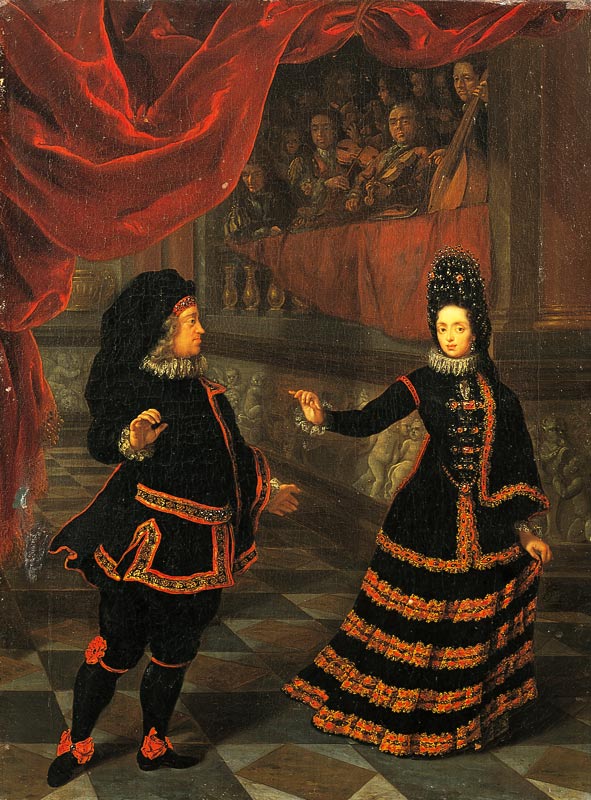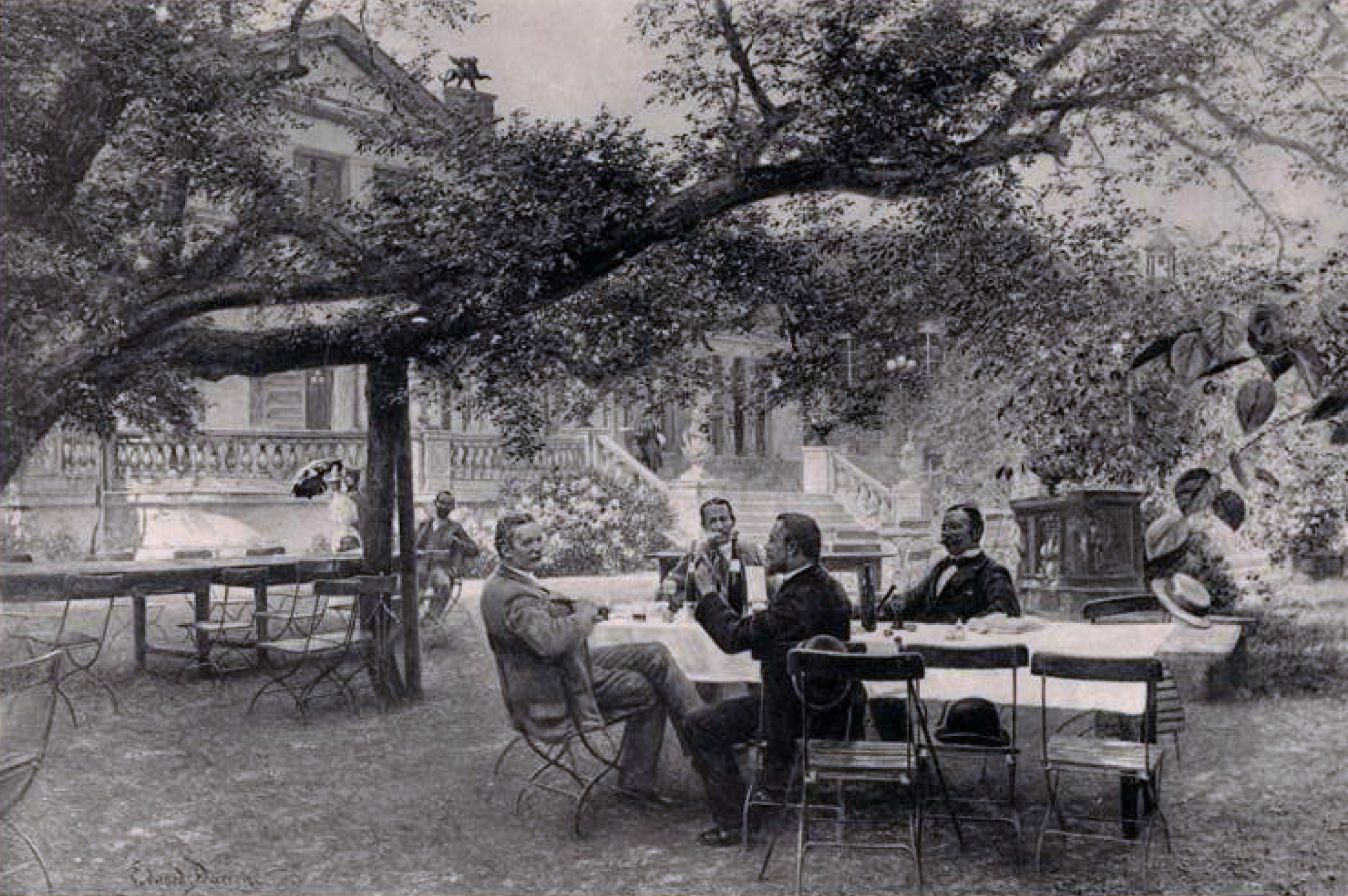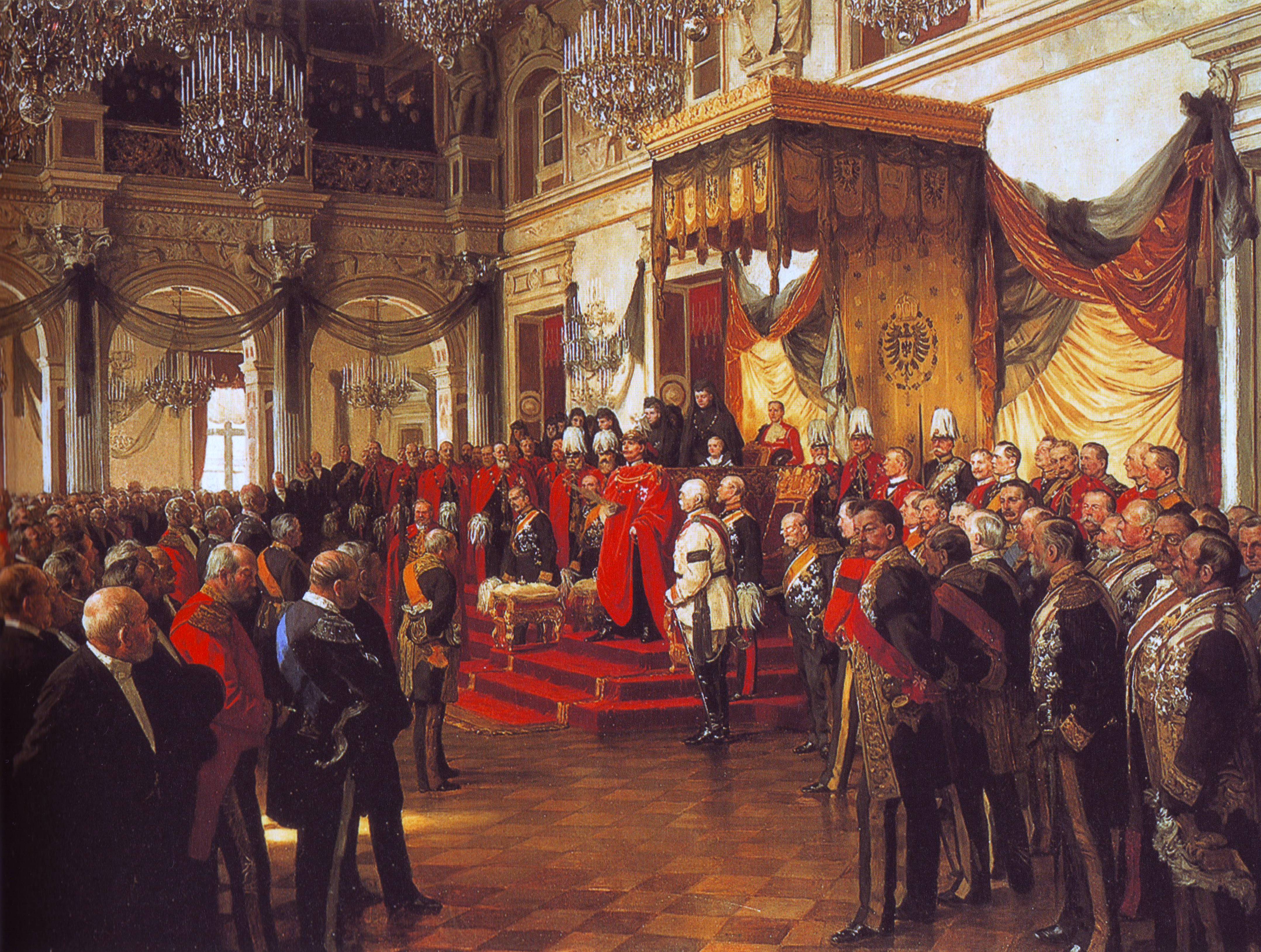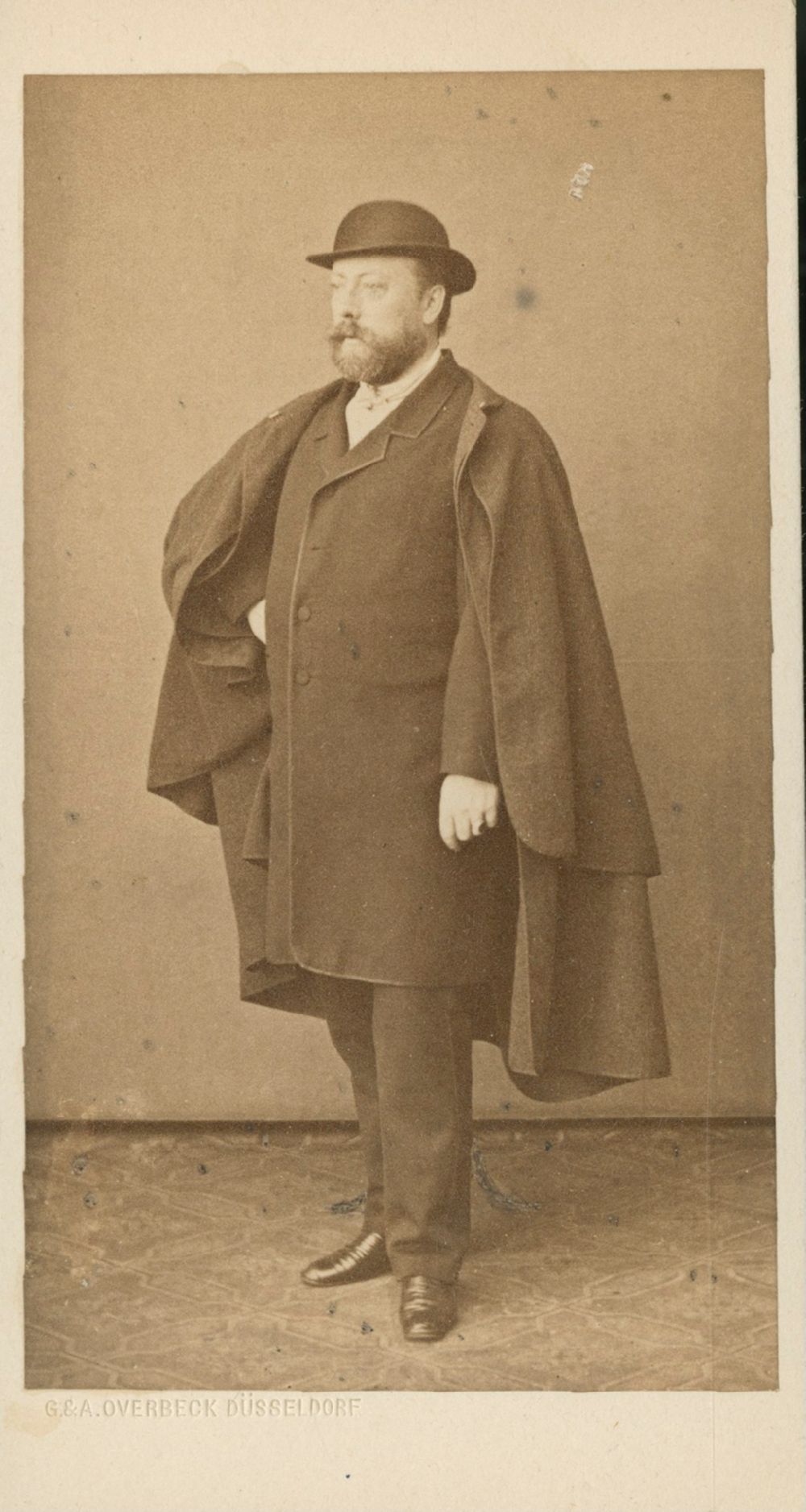|
Malkasten-Redoute
The Malkasten-Redoute was an annual masquerade ball for the Düsseldorf carnival period organized at the Malkasten in Düsseldorf. History The Malkasten (artist association) was founded in Düsseldorf in 1848 as a social association of artists of the Düsseldorf school of painting. After the club decided to admit non-artists as well, it and its festivities quickly advanced to become a social hub of the city, especially in the times of the Düsseldorfer Karneval. In addition to the "Awakening of the " and the carnival parade, the Costume Ball of the KVM, the " Redoute", was a highlight of the annual carnival and the central event on Carnival Saturday. What the Rosenmontagszüge (Rose Monday processions) were for Cologne, the masked balls on Carnival Saturdays represented in Düsseldorf - at least that's how the reporters in the local newspapers around 1900 liked to put it. The Malkasten costume party on Saturday was followed by Sunday, when all the children of the better clas ... [...More Info...] [...Related Items...] OR: [Wikipedia] [Google] [Baidu] |
Alte Tonhalle
The Alte Tonhalle was a municipal social and concert hall in Düsseldorf. Description In 1818, the first Lower Rhenish Music Festival, constituted by the , took place in the Geisler'schen Lokal, which became the centre of music lovers from 1830. It was a restaurant with a large wooden hall, which had already been known as ''Becker's Gartenlokal''. In the ''Geisler's Hall'', the audience in 1850 was close to 1000 visitors. In 1863, the city acquired the pub, which was already called ''Tonhalle'' at that time. Famous composers such as Felix Mendelssohn Bartholdy, Norbert Burgmüller, Ferdinand Hiller, Julius Rietz, Ferdinand Ries and Robert Schumann made music there. Joseph Joachim and Jenny Lind participated in concerts here. Franz Liszt, Johannes Brahms and many great artists of the 19th century celebrated great successes here. Paulus (Mendelssohn), Mendelssohn's Paulus in 1836 and Schumann's ''Der Rose Pilgerfahrt'' and ''Requiem für Mignon'' from 1849 were among others ... [...More Info...] [...Related Items...] OR: [Wikipedia] [Google] [Baidu] |
Malkasten
Malkasten (English: "Paintbox") is a progressive German artists' association, founded in Düsseldorf in 1848, during the March Revolution. Since 1867, their headquarters have been in the Pempelfort district. History During the unrest in 1848, artists also began to take part in political discussions. In August of that year, the held an event called the "Fest der Deutschen Einheit" (Festival for German Unity). Many artists and sculptors associated with the Düsseldorfer Malerschule took part in its artistic design. On the night of the celebration, they decided to establish an artist's association which, a few days later, they named "Malkasten", at the suggestion of Karl Hübner. The name was meant to express the equality of every "color"; artistic and political. The 112 founding members included not only academic professors, such as Theodor Hildebrandt, Heinrich Mücke and Karl Ferdinand Sohn, but also Lorenz Clasen, the editor of the satirical journal ', as well as many memb ... [...More Info...] [...Related Items...] OR: [Wikipedia] [Google] [Baidu] |
Düsseldorfer Karneval
The Düsseldorfer Karneval is the Düsseldorf variant of the "fifth season" known as carnival. The Düsseldorf carnival begins on 11 November each year with the symbolic awakening of the and ends on Ash Wednesday of the following year with his burial. The period of carnival is called the Carnival session and marks a high point in the social life of the state capital. with numerous sittings and Ball (dance party), balls. Together with the events in Cologne and Mainz, the is one of the largest in Germany. Its annual television broadcast made it known nationwide. History The beginnings of the Düsseldorf Carnival Already in ancient times, there were festivities in which disguise, increased alcohol consumption or parades played a role. Whether the origins of the Rhenish carnival can possibly be traced back to the Roman Saturnalia, which were also celebrated in the then Roman Rhineland, cannot be proven. However, numerous elements can be found there that still characterise toda ... [...More Info...] [...Related Items...] OR: [Wikipedia] [Google] [Baidu] |
Andreas Achenbach Dekorationsentwurf Die Narrenburg 6
Andreas ( el, Ἀνδρέας) is a name usually given to males in Austria, Greece, Cyprus, Denmark, Armenia, Estonia, Ethiopia, Eritrea, Finland, Flanders, Germany, Norway, Sweden, Switzerland, Romania, the Netherlands, and Indonesia. The name derives from the Greek noun ἀνήρ ''anēr'', with genitive ἀνδρός ''andros'', which means "man". See the article on '' Andrew'' for more information. The Scandinavian name is earliest attested as antreos in a runestone from the 12th century. The name Andrea may be used as a feminine form, but is instead the main masculine form in Italy and the canton of Ticino in Switzerland. Given name Andreas is a common name, and this is not a comprehensive list of articles on people named Andreas. See instead . Surname * Alfred T. Andreas, American publisher and historian * Casper Andreas (born 1972), American actor and film director * Dwayne Andreas, a businessman * Harry Andreas * Lisa Andreas Places *Andreas, Isle of Man, a ... [...More Info...] [...Related Items...] OR: [Wikipedia] [Google] [Baidu] |
Eduard Daelen
Eduard Adolf Daelen (18 March 1848 – 9 May 1923) was a German painter and writer. For some of his writings he used the pseudonyms Ursus teutonicus, Angelo Dämon, Edu Daelen-Bachem and Michel Bär. He became known above all for the first biography of Wilhelm Busch, which he wrote in 1886. Life Born in Hörde, Daelen was the son of a senior engineer. Although he much preferred to study art, he was first forced to study mechanical engineering. To this end, he was enrolled at the trade school in Barmen from 1863 to 1865 and at the trade academy in Berlin from 1867 to 1868. It was not until the autumn of 1868 that he entered the elementary class with Andreas Müller at the Kunstakademie Düsseldorf, but left again in the autumn of 1869 "because he could not yet get a place in the antique hall". He therefore went first to the Berlin and until 1875 to the Munich Academy of Arts, where Otto Seitz and Wilhelm von Diez were his teachers. After a short stay in Rome, he settled in Düs ... [...More Info...] [...Related Items...] OR: [Wikipedia] [Google] [Baidu] |
Ernst-Moritz-Arndt-Haus
The Ernst-Moritz-Arndt-Haus in the Bonn district of Südstadt was built for the poet Ernst Moritz Arndt. The 19th-century building is Bonn's oldest Rhine villa and is now used as a branch of the Stadtmuseum Bonn. It is located at Adenauerallee 79, about from the Rhine bank. The villa is listed under Denkmalschutz. History Ernst Moritz Arndt had the villa built from January 1819 at the latestOlga Sonntag: ''Villen am Bonner Rheinufer: 1819-1914.'' Bouvier Verlag, Bonn 1998, , vol. 2, catalog (1), . in a wine-growing area outside the city walls of the time. on the website of the Rhineland Nature Park The builder had been appointed professor of modern ... [...More Info...] [...Related Items...] OR: [Wikipedia] [Google] [Baidu] |
Wilhelm II, German Emperor
Wilhelm II (Friedrich Wilhelm Viktor Albert; 27 January 18594 June 1941) was the last German Emperor (german: Kaiser) and King of Prussia, reigning from 15 June 1888 until his abdication on 9 November 1918. Despite strengthening the German Empire's position as a great power by building a powerful navy, his tactless public statements and erratic foreign policy greatly antagonized the international community and are considered by many to be one of the underlying causes of World War I. When the German war effort collapsed after a series of crushing defeats on the Western Front in 1918, he was forced to abdicate, thereby marking the end of the German Empire and the House of Hohenzollern's 300-year reign in Prussia and 500-year reign in Brandenburg. Wilhelm II was the son of Prince Frederick William of Prussia and Victoria, German Empress Consort. His father was the son of Wilhelm I, German Emperor, and his mother was the eldest daughter of Queen Victoria of the United Kingdom and ... [...More Info...] [...Related Items...] OR: [Wikipedia] [Google] [Baidu] |
Peter Paul Rubens
Sir Peter Paul Rubens (; ; 28 June 1577 – 30 May 1640) was a Flemish artist and diplomat from the Duchy of Brabant in the Southern Netherlands (modern-day Belgium). He is considered the most influential artist of the Flemish Baroque tradition. Rubens's highly charged compositions reference erudite aspects of classical and Christian history. His unique and immensely popular Baroque style emphasized movement, colour, and sensuality, which followed the immediate, dramatic artistic style promoted in the Counter-Reformation. Rubens was a painter producing altarpieces, portraits, landscapes, and history paintings of mythological and allegorical subjects. He was also a prolific designer of cartoons for the Flemish tapestry workshops and of frontispieces for the publishers in Antwerp. In addition to running a large workshop in Antwerp that produced paintings popular with nobility and art collectors throughout Europe, Rubens was a classically educated humanist scholar and diploma ... [...More Info...] [...Related Items...] OR: [Wikipedia] [Google] [Baidu] |
Albrecht Dürer
Albrecht Dürer (; ; hu, Ajtósi Adalbert; 21 May 1471 – 6 April 1528),Müller, Peter O. (1993) ''Substantiv-Derivation in Den Schriften Albrecht Dürers'', Walter de Gruyter. . sometimes spelled in English as Durer (without an umlaut) or Duerer, was a German painter, printmaker, and theorist of the German Renaissance. Born in Nuremberg, Dürer established his reputation and influence across Europe in his twenties due to his high-quality woodcut prints. He was in contact with the major Italian artists of his time, including Raphael, Giovanni Bellini, and Leonardo da Vinci, and from 1512 was patronized by Emperor Maximilian I. Dürer's vast body of work includes engravings, his preferred technique in his later prints, altarpieces, portraits and self-portraits, watercolours and books. The woodcuts series are more Gothic than the rest of his work. His well-known engravings include the three '' Meisterstiche'' (master prints) ''Knight, Death and the Devil'' (1513), '' Sain ... [...More Info...] [...Related Items...] OR: [Wikipedia] [Google] [Baidu] |
Speech From The Throne
A speech from the throne, or throne speech, is an event in certain monarchies in which the reigning sovereign, or a representative thereof, reads a prepared speech to members of the nation's legislature when a session is opened, outlining the government's agenda and focus for the forthcoming session, or in some cases closed. When a session is opened, the address sets forth the government's priorities with respect to its legislative agenda, for which the cooperation of the legislature is sought. The speech is often accompanied with formal ceremony and is often held annually, although in some places it may occur more or less frequently, whenever a new session of the legislature is opened. Historically, when monarchs exercised personal influence and overall decision-making in government, a speech from the throne would outline the policies and objectives of the monarch; the speech was usually prepared by the monarch's advisers, but the monarch supervised the drafting of the speec ... [...More Info...] [...Related Items...] OR: [Wikipedia] [Google] [Baidu] |
Andreas Achenbach
Andreas Achenbach (29 September 1815, Kassel – 1 April 1910, Düsseldorf) was a German landscape and seascape painter in the Romantic style. He is considered to be one of the founders of the Düsseldorf School. His brother, Oswald, was also a well known landscape painter. Together, based on their initials, they were known as the "Alpha and Omega" of landscape painters. Biography His father, Hermann,(1783–1849) was a merchant by trade, but worked at a number of professions. In 1816, he became the manager of a metal factory in Mannheim. Two years later, they moved to St.Petersburg, where his father wanted to set up a factory with money that his mother had received as an inheritance. It was here that Andreas took his first drawing lessons. The project failed and they returned to Rhine Province in 1823. Soon, his father had established a brewery in Düsseldorf, with an inn that was frequented by the local art community. There, in 1827, he began his artistic education in earnest ... [...More Info...] [...Related Items...] OR: [Wikipedia] [Google] [Baidu] |
Johannes Gehrts
Johannes Gehrts (26 February 1855 St. Pauli – 1921 Düsseldorf), brother of Carl Gehrts (1853–1898), was a leading German illustrator whose work appeared in popular magazines such as ''Die Gartenlaube'', in the design of children's books and in works of his friend Felix Dahn. He depicted scenes from Germanic and Norse mythology, legends and sagas, pirate stories, travel adventures and fairy-tales. He also illustrated reports on the scientific expeditions of the German physician and anthropologist Karl von den Steinen. Gehrts attended the art academy of Weimar from 1873 to 1876, and lived in Düsseldorf from 1884 onwards. Gallery File:Dietrich fängt den Zwerg Alfrich by Johannes Gehrts.jpg, '' Dietrich catches the dwarf Alfrich'' (1883) File:Freya by Johannes Gehrts.jpg, ''Freya'' File:Gehrts Armin verabschiedet sich von Thusnelda 1884.jpg, ''Arminius'' ''says goodbye to Thusnelda'' (1884) File:Ostara by Johannes Gehrts.jpg, ''Ostara'' (1884) File:Walther und Hildgund ... [...More Info...] [...Related Items...] OR: [Wikipedia] [Google] [Baidu] |

_b_396.jpg)


_002.jpg)





